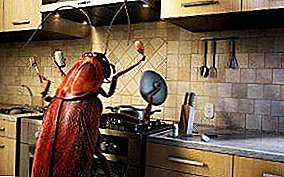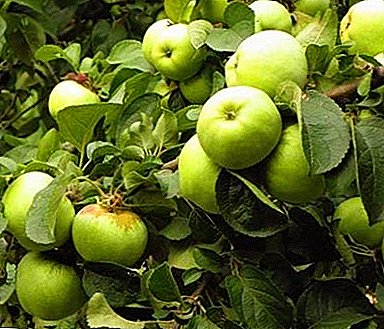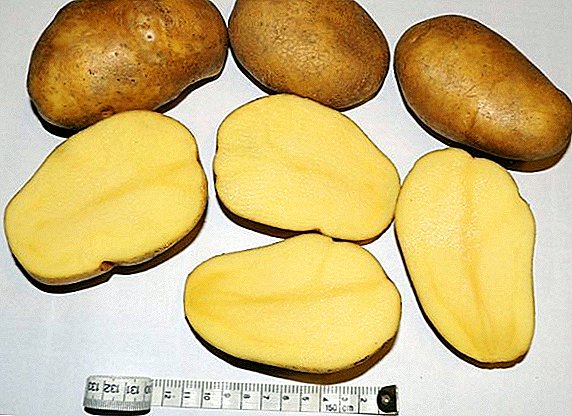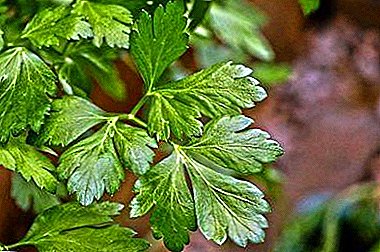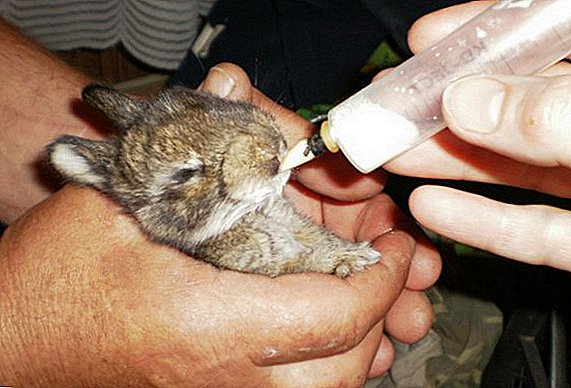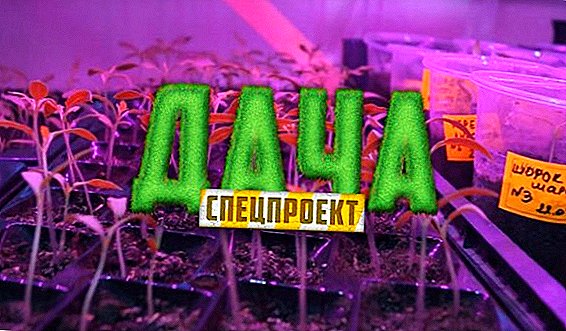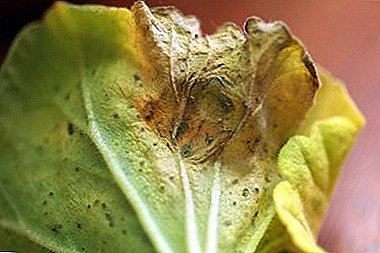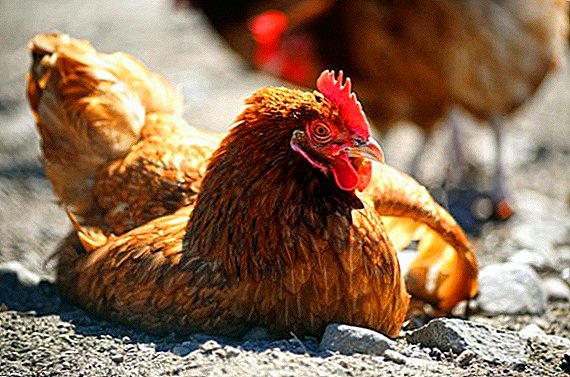 Chickens are the most frequent inhabitants of both domestic and farm, but often the birds are exposed to various diseases, which are the main cause of huge losses, especially for large farms. One of these diseases is Marek's infection, which is quite rare, but can destroy a huge number of chickens. In this article we will look at detailed information about this disease, its forms and ways to combat infection.
Chickens are the most frequent inhabitants of both domestic and farm, but often the birds are exposed to various diseases, which are the main cause of huge losses, especially for large farms. One of these diseases is Marek's infection, which is quite rare, but can destroy a huge number of chickens. In this article we will look at detailed information about this disease, its forms and ways to combat infection.
Forms of the disease
Marek's disease is a viral infection of chickens, which was first described by the Hungarian researcher Jozsef Marek in 1907. The scientist called it chicken polyneuritis, but over time the disease became known in the world as Marek's disease.
Did you know? The first outbreaks of mass infection and death of birds from Marek's disease were recorded in 1949. Since the 60s of the 20th century, the territory covered by the disease has been increasing every year. At the moment, they are suffering from the poultry farms and farms located in the USA, Germany, and England.
There are several forms of the disease, which are characterized by the radically opposite state of the bird's organism, therefore, we consider them in more detail in order to be able to distinguish each form and take the necessary measures in time. 
Neural
This form of the disease is associated with damage to the bird's nervous system. The state of chickens is accompanied by the development of partial or complete paralysis, decreased activity, damage to the motor and nervous system. In this case, the chickens are spreading their legs in different directions, the state is associated with the lack of ability to move because of the failure of the legs.
We advise you to read about the diseases of chickens and methods of their treatment.
Ocular (ocular)
This form of the disease is accompanied by damage to the eyes of birds, which can lead to total blindness. In this case, the iris of the eye becomes discolored, the normal form of the pupil is disturbed, and it gradually narrows to complete destruction.
Visceral
This form of the disease is accompanied by an increase in feather follicles, the occurrence of lymphoid tumors mainly in the liver and spleen. The disease is accompanied by a deterioration in the general condition of the bird, it becomes sluggish and drowsy, inactive. 
Causes of disease
Marek's disease occurs under the influence of a herpevirus of group B. A herpevirus can maintain its activity in bird droppings, bedding, eggs and objects in the house for a long time, but provided that the air temperature is stable and is +25 degrees.
The virus, affecting the bird, can be transmitted to other individuals by airborne droplets, through the gastrointestinal tract or feather follicles. Very quickly, the entire population is affected by the virus.
Important! Most often, Marek's diseases are exposed to individuals at the age of 2 weeks, in this case 85% of the chickens will be infected if the virus enters the house.
In the chicken coop with birds can penetrate beetles, flies, ticks, which are considered active carriers of the disease. For seven days after infection, the chicken does not show any symptoms of the disease, so for a long time it is an active carrier of the virus and infects other individuals. 
Symptoms
Like any other disease, Marek's disease has characteristic symptoms that vary and depend on the form of the course - acute or classic.
We recommend that you familiarize yourself with the symptoms and methods of treatment of diseases such as infectious bronchitis, egg production syndrome, aspergillosis, mycoplasmosis, conjunctivitis, pasteurellosis, colibacillosis and Newcastle disease.
Acute form
The acute course of the disease is associated with mild clinical symptoms characterized by:
- emaciation;
- shortness of breath;
- uncoordinated movements;
- lying on your side;
- low hemoglobin and red blood cells;
- a slight increase in some blood parameters (pseudo-eosinophils, lymphocytes or monocytes).

Classic shape
Most often, the disease is accompanied by the classic form of the disease, it is also called the subacute course.
The clinical features of the classical form are mild and presented:
- multiple problems with the motor system;
- coordination and movement problems;
- strange movements of the limbs (they rise sharply and slowly hesitantly descend);
- partial paralysis of the internal organs, problems with the legs, wings, tail and neck;
- defeat of the sciatic nerve and nerve of the lumbosacral plexus;
- lesion of the optic nerve, blindness afterwards;
- loss of appetite or a complete rejection of food;
- the change in the color of the iris and the shape of the pupil (the iris becomes gray-blue or white-gray, the pupil takes the form of a star polygon, pear-shaped or slit-shaped);
- a decrease in egg production or its complete absence;
- nervous and gastrointestinal disorders.

Treatment
At the moment there are no drugs that would completely cure the bird from Marek's disease. If an infectious focus has been found, antiviral therapy is used, quarantine is established, most often the bird is slaughtered for meat to prevent the spread of the disease between other healthy individuals.
Important! The most effective way to combat the virus is preventive vaccination of poultry, which saves most individuals from infection or facilitates the course of the disease and saves life.
Consider what measures are taken in case of infection of adult chickens and broilers. 
In adult chickens
It is possible to treat the disease in infected individuals only at the initial stage, when the bird's body has not yet been subjected to paralysis. An effective antiviral agent is the drug "Acyclovir", but it does not guarantee 100% of the result, even when used in the initial terms of the lesion.
Poultry owners will be interested in reading about why chickens go bald and fall on their feet, as well as what are the most common diseases of the eyes and feet in chickens.
The drug in some cases does not give a positive effect and does not save the bird from paralysis, provoking an early death of the individual. The drug is used one tablet of 200 mg every day for 2 days, then reduce the dose and use 0.5 tablets for 5 days.
In order to soften the effect of the drug and maintain the gastrointestinal tract in a normal state, each hen is given Bifidumbacterin one bottle once a day, and the use of the drug continues for 5 days after treatment with Acyclovir.  At the end of the treatment course, the scallop becomes covered with a herpes rash, acquires a pale tint, which is a positive sign and indicate the beginning of the healing process of the bird.
At the end of the treatment course, the scallop becomes covered with a herpes rash, acquires a pale tint, which is a positive sign and indicate the beginning of the healing process of the bird.
U broilers
Treatment of poultry meat breeds often does not give a positive result, therefore, when growing broilers on an industrial scale, preventive vaccination is used, which is carried out on the second day of the chick's life. Sometimes chicks are vaccinated for 10-20 days after the first vaccination.
You will probably be interested in reading about how broiler chickens look, what can be given to chickens, how to raise and maintain broiler chickens, how and what to treat infectious and non-infectious diseases of chickens, as well as what features and broiler chickens.
If the vaccination was not carried out and the disease spread, covering from 5 to 10% of the individuals, then it is pointless to begin treatment, in this case all the chickens that came in contact with the patients go to slaughter.  After keeping the infected individuals, the house is thoroughly disinfected to avoid contamination of the new batch of young stock that will be placed there.
After keeping the infected individuals, the house is thoroughly disinfected to avoid contamination of the new batch of young stock that will be placed there.
Did you know? The first commercial vaccines for Marek's disease were invented in the 1970s and were successfully used as a prophylactic against a viral disease.
Vaccination
For vaccination of birds using live attenuated viruses. After the procedure, the antibodies to the disease are produced in the body of the birds, which further allows you to effectively fight the infection when it re-enters the body.
Video: vaccination of chickens from Marek's disease To vaccinate birds, virus vaccine is used, which is based on chicken herpevirus strains, to such funds include:
- liquid virus vaccine from strain M 22/72;
- liquid virus vaccine "Nobilis";
- drug "Intervet";
- frozen suspensions in the form of vaccines "Vaksitek", "Mareks", "Rispens".
After the introduction of the vaccine, the body is protected by 90%, immunity to the disease in chickens is formed 10 days after vaccination. Small adverse reactions to the vaccine in the form of a sleepy state and lethargy are allowed.
After the introduction of the vaccine for two days, chickens are recommended to be placed in a warm place in order to exclude the possibility of the occurrence of colds due to weakened immunity. 
Prevention methods
In order to avoid the development of infection in the house, you must adhere to the basic rules of prevention, which are:
- compliance with veterinary and sanitary requirements in the room where the birds live, and in incubators;
- carrying out thorough disinfection and disinfestation before starting new individuals;
Learn how and how to properly disinfect the chicken coop.
- culling and destruction of individuals that have the main symptoms of the disease and are suspected of being infected;
- keeping birds by age, i.e. young animals should be raised separately from chickens, and chicks should be given maximum attention in the first 30 days of life;
- keeping in quarantine conditions at least a month of newly acquired birds;
- planting birds with symptoms of any disease in the quarantine room.

If individuals with signs of Marek's disease are identified, severe preventive measures are taken:
- a ban on the sale of eggs from incubators and the sale of live poultry;
- cessation of hatching of young stock until the disease is completely eradicated;
- the incubator that was used for breeding is completely disinfected;
- poultry houses are cleaned and disinfected.
Important! As an antiseptic for the treatment of the room, solutions of formaldehyde, chlorine, phenol, and safe alkalis are used.
Thus, Marek's disease is very dangerous for chickens, so prophylactic vaccination is often used in poultry farms and farms, which allows you to avoid huge losses.  In order to minimize the risk of infection of individuals, they resort to preventive measures, as if all sanitary standards are observed, birds are less susceptible to infection.
In order to minimize the risk of infection of individuals, they resort to preventive measures, as if all sanitary standards are observed, birds are less susceptible to infection.


